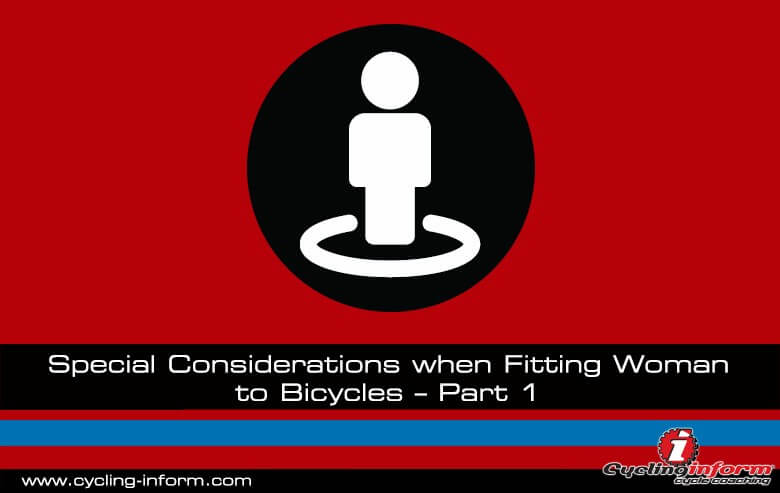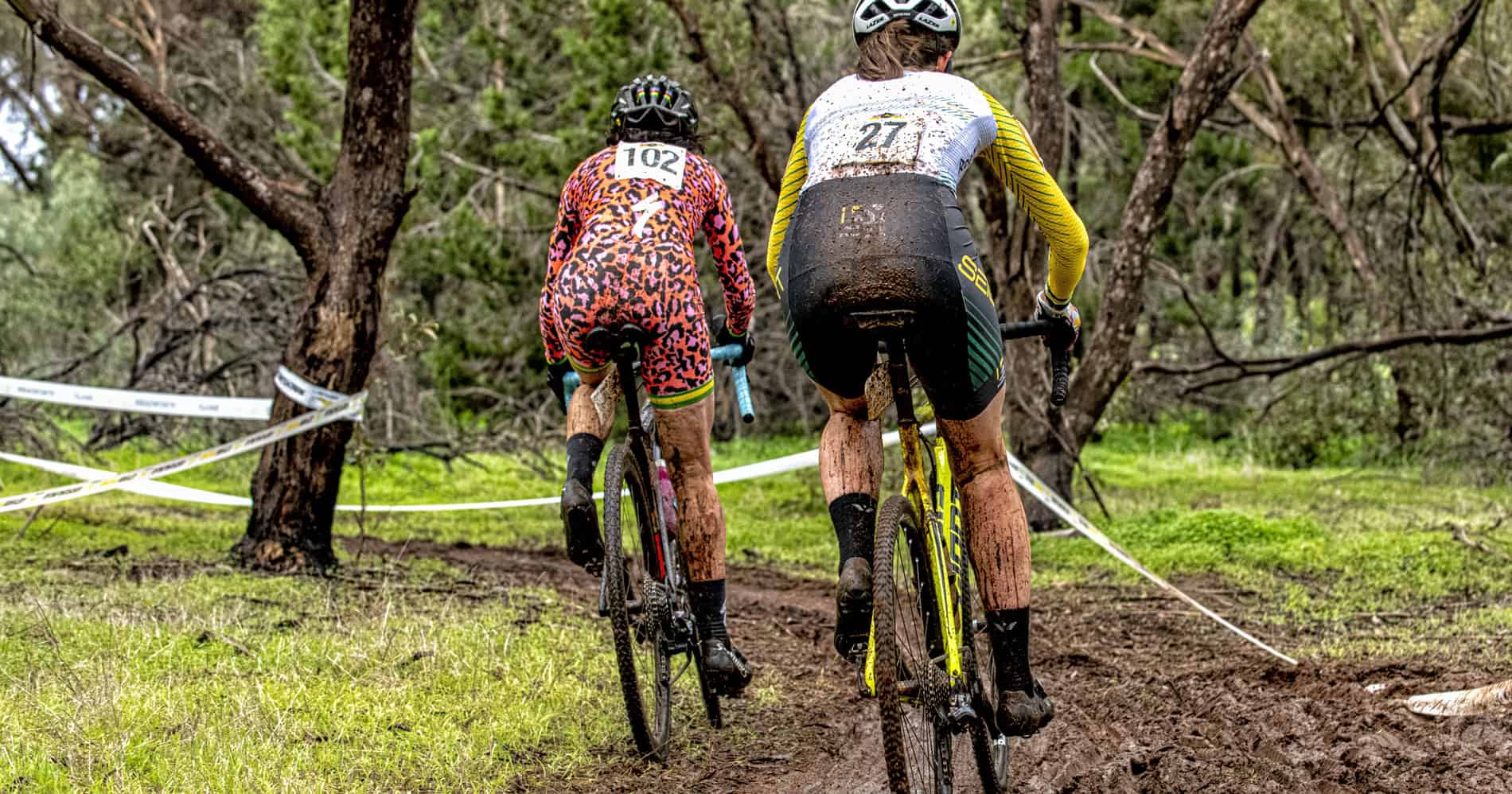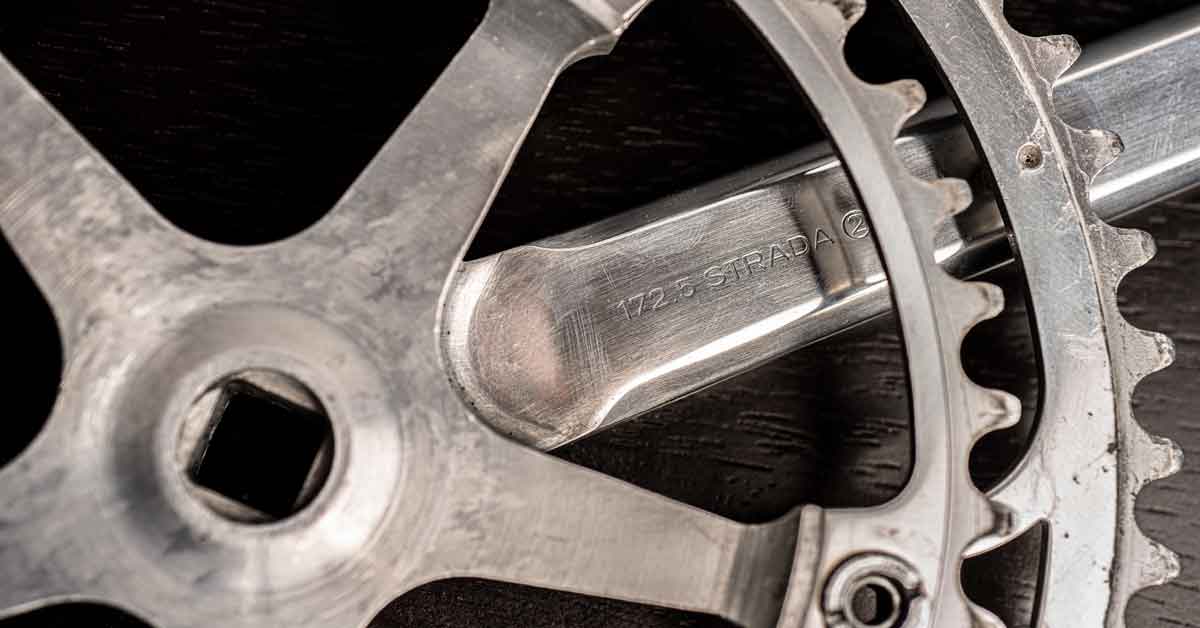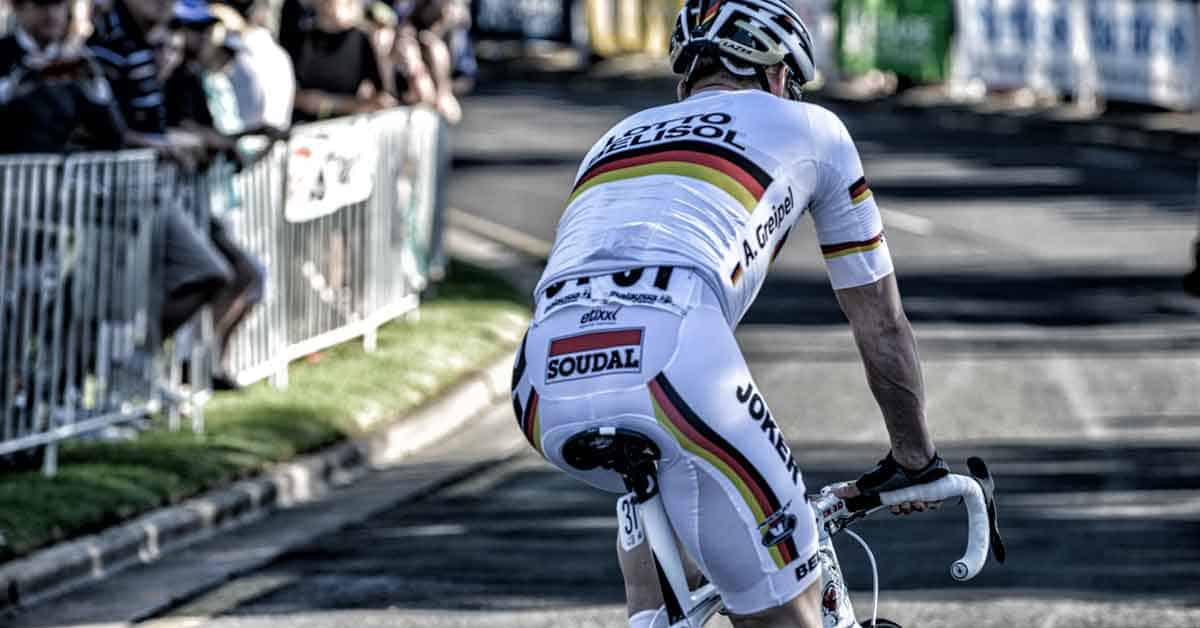Sensitive Issues – Fitting women to bikes touches on some sensitive areas, particularly for bike manufacturers. Steve Hogg explains why more women don’t ride bikes.
I have been thinking about this article for six months or more. That is the way I work. I turn an issue over in my mind in idle moments and eventually write about it. Originally the concept for this article was fairly narrow in focus. The more I thought about the matter, the more I realised that what I had to say could not be properly explained without tackling wider issues. So here goes. This is why women don’t ride bikes.
Firstly let me establish some facts. Go to any bike race, track carnival or triathlon and you will find that a minority of the competitors are women. Often they’re in a tiny minority. I know of championship bike races where no medals have been awarded in some women’s categories, as there was less than the minimum number of riders necessary before the full complement of medals is awarded. Equally, I have been to sprint triathlons (500 metre swim, 20km cycle, 5km run) of both championship rounds and qualifying races where women are noticeably in the minority.
Currently, in NSW, only 17% of the licensed triathletes are female. Nationwide in cycling, a fraction over 10% of the licensed riders are women. All of this comes at a time when in this country 50% of the competitive athletes (by this I mean people registered with the appropriate sporting federation) are women. In cycling and triathlon, both sports where the use of a bicycle is mandatory in competition, women are not present on the start line in anything like the same numbers as men.
I have one question to pose to any male reading this. Why? There is no need for women to respond because every woman who has ever ridden a bike already knows the answer.
Generally, the cycling experience for women can be summed up as, “sore hands, stiff neck and shoulders and sore or chafed pubic area.” I have put that in quotation marks because, as most of my working life I spent positioning people on bicycles, I have lost count of the number of times I have had women use that or similar phrases when I asked them how I could help.
I have alluded to the matters I am about to discuss in other articles, but it is time for that full story. Bear with me, as it is a long story. Also, I expect a few temperatures to rise in various sections on the bicycle industry amongst the people who read this. I am more than happy for others to hold an opinion on the matter that varies from mine. Equally I am more that happy to debate with anyone who wishes to express that opinion through the letters column of the magazine Bicycling Australia. What follows is the product of me experience in the bicycle industry.
Uncomfortable Sensations
The key to sitting on a bicycle comfortably, powerfully and above all, efficiently, is to sit in such a way that the pelvis is inherently stable. Pelvic stability is the basis of most athletic endeavours and cycling is no different. A stable pelvis on a bicycle means the hip flexors and hip extensors are working in harmony and equilibrium with no tendency for any muscle group to overpower its antagonist. If this is achieved correctly, there will be no lower back pain and the rider will feel strong and relaxed.
How is a stable pelvis easily achieved on a bike? The simple answer is by sitting on it. By this I mean a rider’s weight should be borne largely on the ischiums (sit bones) at the base of the pelvis. Correctly done, there will be no more weight on the hands than is necessary to steer and control the bike, nor will there be unnecessary pressure on the pubic area. This should be self-evident and beyond argument. However, for the great majority of women (and many men) these simple basic fundamentals of comfort and pelvic stability are not achievable on mass produced bicycles, without substantial modification to the bicycles.
Many women at some stage in their life try riding a bike and for them it is not a lot of fun. Bike riding they like, but not the associated neck and shoulder pains and pubic unpleasantness. So being clever, they seek other athletic outlets. A substantial minority continue because perhaps they are more motivated or competitive by nature, some think perhaps they can put up with the situation, but it is still not much fun.
I have had women tell me that they cannot shower for three days after a long ride. It hurts too much. I have had women often tell me that they could not urinate for two or three days without pain after the long rides necessary in the lead up to Ironman races.
I have even come across a top-level female road cyclist suffering from osteomyelitis pubis. Years of riding with a substantial amount of weight on her pubic bone had caused the bone marrow to inflame and the bone to crumble and rot. Never mind the various vaginal infections and inflammation in that time. When I asked her how she had put up with the pain and unpleasantness she told me that she had always won a lot of races and she thought that was the price she needed to pay for her success.
Why do women have to sit on areas they would rather not and wore hands and tight neck and shoulders in order to ride a bike? The answer to that question is the real story.
Problem Areas
Modern bikes are not designed to fit people. They are designed to be easy to make, which is a totally different thing. Bicycle manufacturing is a very tough business to make a dollar at. The companies that have survived and thrived have ruthlessly standardised and streamlined their manufacturing process to cut costs, in order to remain competitive against other companies doing the same.
One of the ways the cost saving have been achieved has been by using the same fork in a wide variety of frame sizes. Almost any brand of bike’s specification page in the brochure will verify this. Unfortunately though, while this saves manufacturers a few dollars, it means that a range of frame sizes have to be designed around a fixed point. The designer is no longer free to vary the fork rake if necessary.
Another major concern for frame designers is to come up with satisfactory space between a rider’s foot and a bike’s front wheel in 700c size. In a litigious modern society, where sometimes it seems as if a person does not require common sense, just a good lawyer and someone to blame, no manufacturer wants a rider’s foot to contact the front wheel while they pedal. Fair enough too. How is this avoided?
Given a set top tube length to work with, the three parameters that can be manipulated that make a noticeable difference are: seat tube angle, head tube angle and fork rake. The correct solution to the problem of foot clearance is to play with head angle and fork rake so that adequate clearance is achieved between foot and front wheel and good steering characteristics maintained. But how can this be done when a manufacturer has locked themselves into the same fork rake in a variety of sizes?
Head tube angle alone can be changed and often it is, within narrow limits. Almost invariably, manufacturers choose the cheap option, which is to steepen the seat tube angle. Steepening the seat tube angle (making it more upright) pushes the entire front of the bike, including the front wheel, further ahead of the pedals and increases that foot to front wheel distance.
This manufacturing approach has a greater effect on smaller frames. The smaller the frame and hence shorter the top tube, the more upright the seat tube angle has to be to achieve adequate front wheel clearance. This means that the smaller the frame, the proportionally further forward the rider is forced to sit and the greater their tendency to roll their pelvis onto the pubic area. Also, the greater the weight transfer forward onto the hands. This means that elbows lock to bear the weight and the muscles around the neck and shoulders load up. This poor design is made worse because women’s genitalia is further underneath them than a man’s.
Difficult Position
What I shall euphemistically term “women’s problems” with achieving comfort on bicycles are caused generally by cost cutting leading to poorly designed frames with overly steep seat angles. Paradoxically, manufacturers have been so successful at cost cutting without affecting material quality that they have become equally effective at limiting their potential market!
Human beings come in a massive array of shapes, sizes and capabilities. I do not expect production bikes to address the needs of every individual. By their very nature, a production bike should suit Mr or Miss Average, or a mid-point in the range of needs. They don’t. I have sold custom bikes with every seat angle between 69.5 and 74.5. Better than 98% of those were in the range of 70-73 and about 80% were in a range of 71-72. So it is easy to see where, in my experience the mid-point is.
The majority of production bikes are outside the steeper end of the envelope and the smaller the frame in question, generally the worse they are in this regard. Women are the majority of small people in the planet and the design approach taken by bicycle manufacturers is forcing them to sit on their labia and hands. It is and wonder less women ride bikes than men?
Never fear, help is at hand at your local bike shop. You can buy a big fat gel saddle and thick gel padded gloves. Never mind that many of those saddles are so poorly designed with such short saddle rails and consequently lack a reward adjustment that they force a rider to sit even further forward than on a standard seat. So even more weight is borne on the pubic area, albeit on a softer pad. Never mind when a rider supports a lot of weight on their hands it is hard to accurately make the fine adjustments necessary to steer a bike. Also, the thicker the gloves, the more movement there is between glove and hand, and therefore the less control.
My challenge to bike manufacturers is: Wake Up! There is a huge commercial opportunity worldwide, for the first company man enough, or more aptly, woman enough to get it right.
Some manufacturers are trying, but they blow it. Certain manufacturers do produce bikes with their idea of woman specific frame geometry. These usually have shorted top tubes and often smaller wheels. Whether because of lack of interest, lack of knowledge or poor advise I don’t know. Every woman specific bike I have seen has had the same ridiculously steep seat tube angles that are the major reason for the problems this article is about.
While I am at it, who said women need shorted top tubes anyway? Ostensibly this is because women often have shorter torsos and arms that men of similar height and therefore the common reasoning is shorter top tubes are necessary to accommodate this. Wrong. Body measurements play little part in arriving at a comfortable efficient position on a bicycle. There is almost a universal idea afoot in the bicycle world that there is a correlation between body measurements and a good riding position.
Taking body measurements and then consulting a book of tables or computer program tells me nothing about a person’s flexibility, range of movement, injury history, pedalling technique or the unique way that they relate to a bike that I call body language.
Body measurements are a tiny part of the story, not the whole story as many are led to believe. Sorry I digress – women are often more flexible than men and when their weight is correctly supported under their ishiums on the saddle, they can reach towards the bars to their comfortable potential.
This is often further than could ever be guessed at by taking static body measurements. The body measurement approach to sizing is almost universal because it is easy and needs little or no training. Additionally it lends a veneer of pseudoscientific method to the process of bike buying.
So, girls that’s the bad news. The good news is that you can do things to improve, but that’s in the next issue.






Leave A Comment